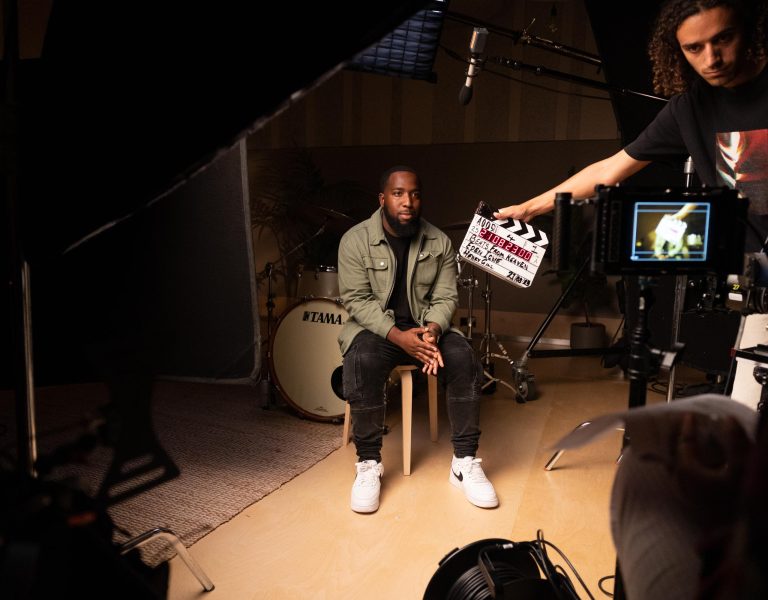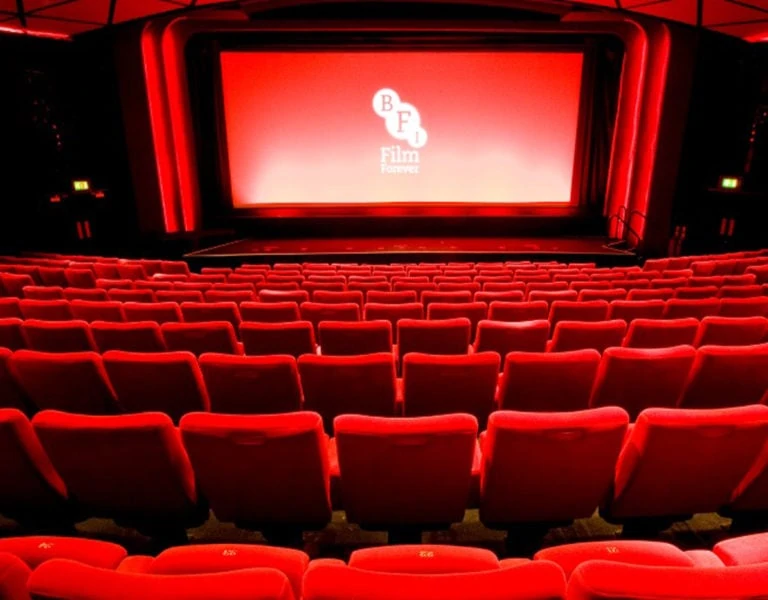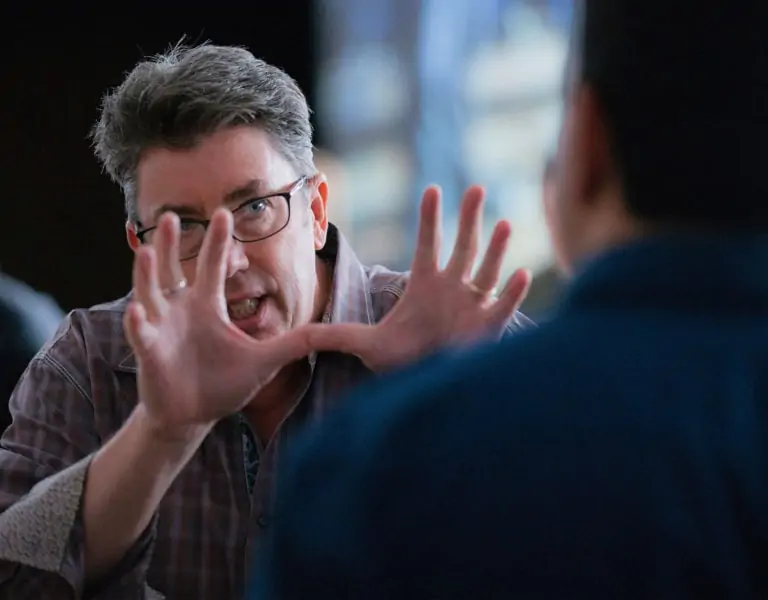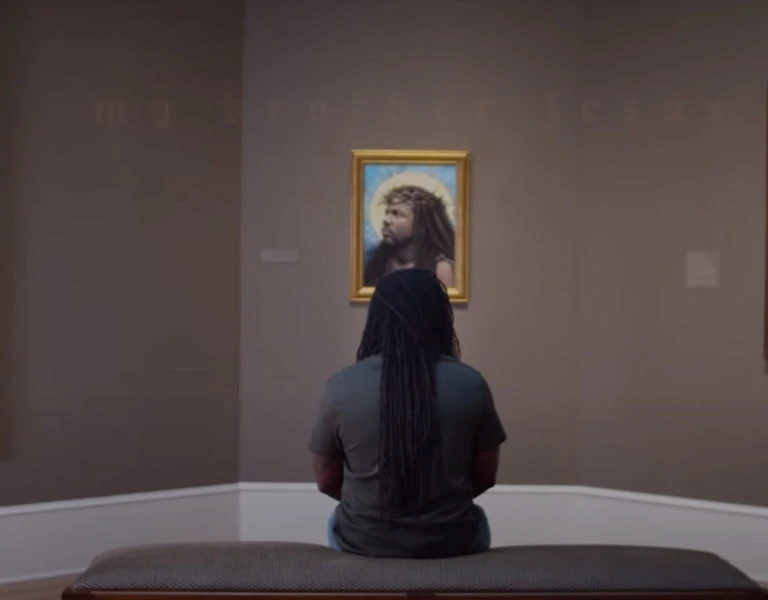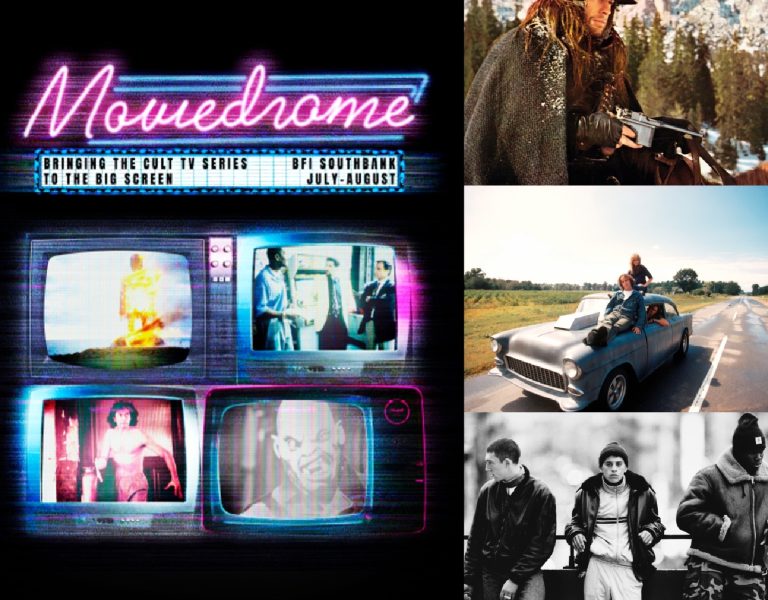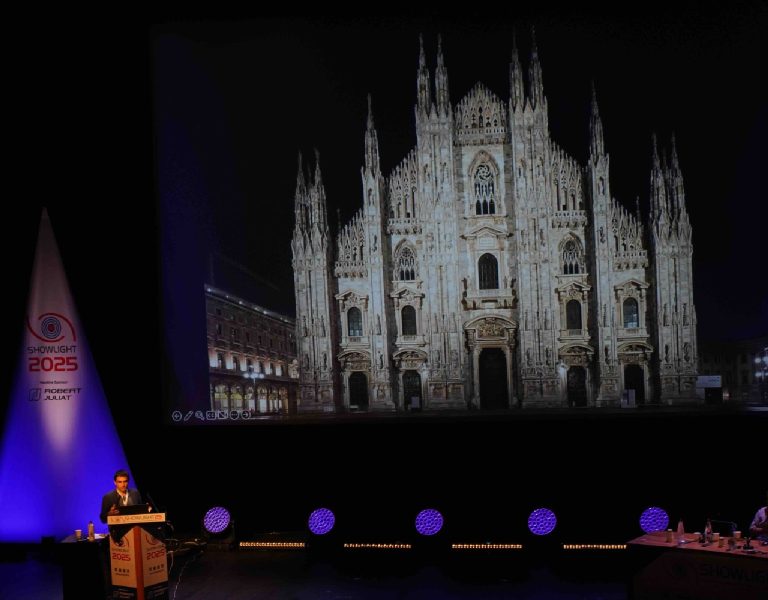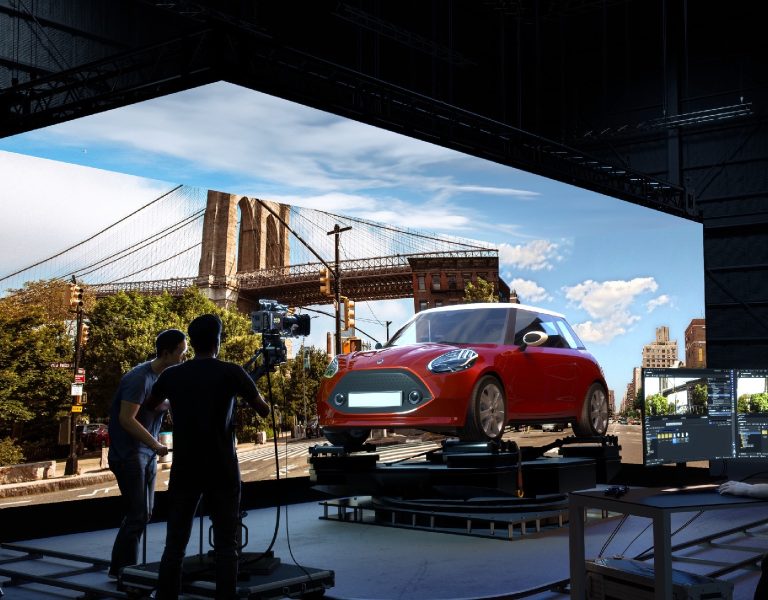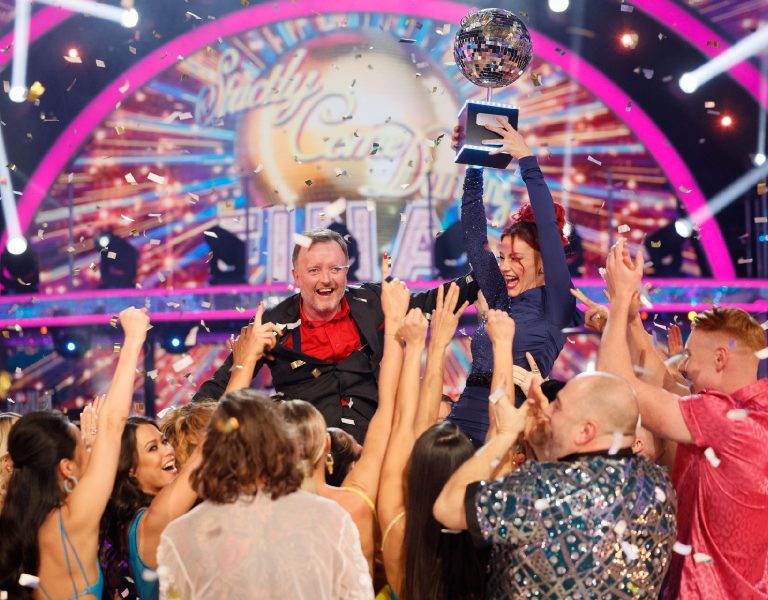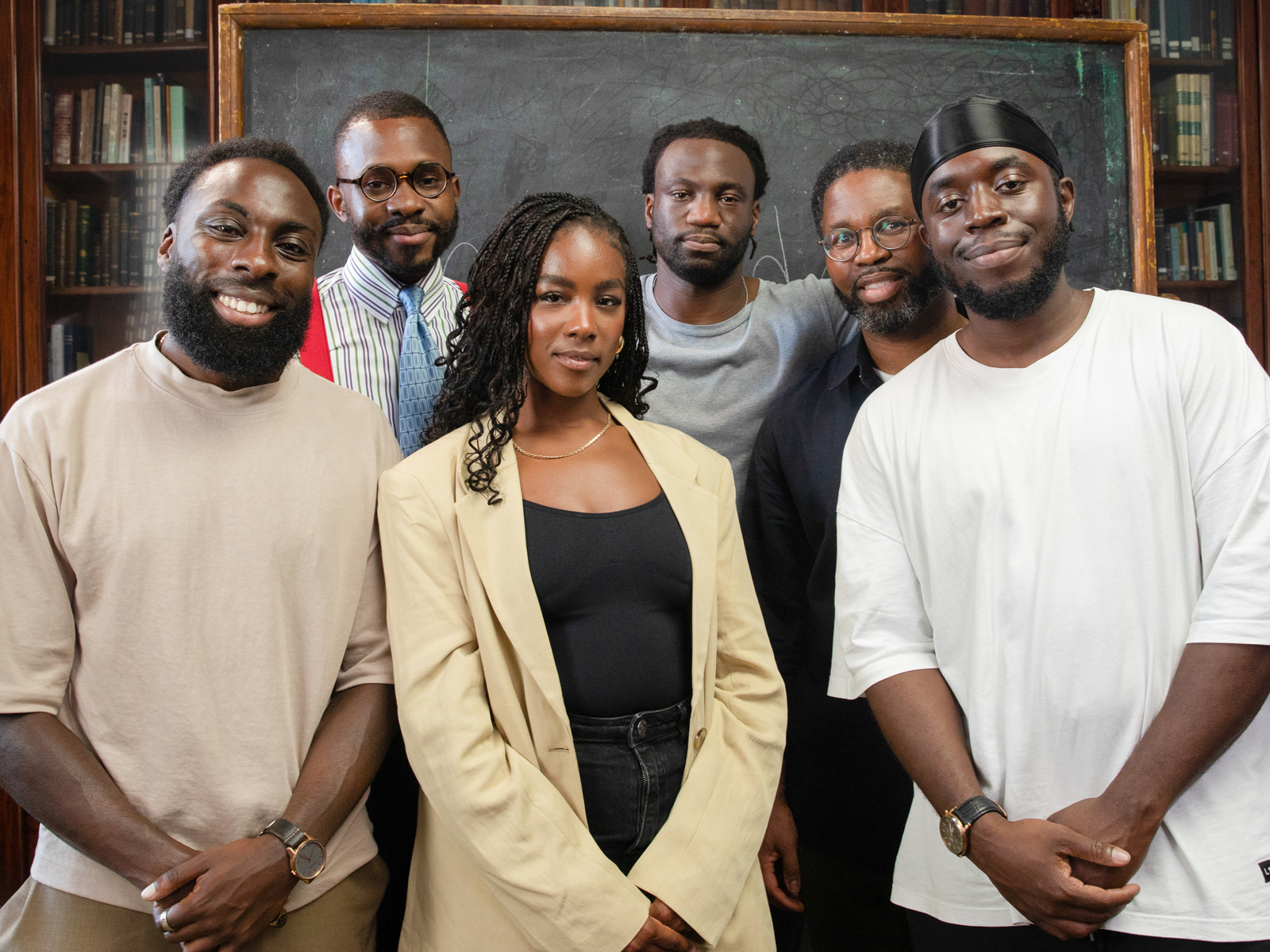
Black Britain Unspoken (BBU) aims to discover new talent and amplify stories about Black British lives. This exciting programme is aimed at storytellers, filmmakers, and creatives who can share experiences and perspectives of being Black in the UK.
We hear from filmmakers about their Black Britain Unspoken projects, collaborations and processes…
Joladé Olusanya, Filmmaker, mandem
Can you tell us about your film and why you thought the story needed to be told?
Gboyega Odubanjo was a poet and a friend of mine who I had seen perform a piece about the ‘mandem’ one night. It was a really powerful and beautiful piece which helped me find the language to write about the same community which I’d been wanting to do for a long time. As a filmmaker and a poet, I’m always thinking of ways to make my writing visual, so I had a concept in mind already. The plan was to share the piece with Gboyega the next time I saw him but sadly I never got the chance.
I wanted to honour Gboyega and I wanted to give a platform to my people. I wanted to add my voice to the many who are doing the work of platforming others as artistically and true as possible. We’re still having to normalise our existence these days so this was my contribution towards that. I’m also the kind of person who needs to get ideas out of his head so he can make room for the next one or else there’ll be chaos in my mind.
Why did you want to put yourself forward for Black Britain Unspoken?
The concept for mandem and the story made perfect sense for the platform and the initiative. I wanted to creatively push boundaries and see what was possible by bringing in my community and exploring different mediums like poetry. I’ve been making documentaries for a long time, and I felt it was the right moment to see how far I could push things creatively. I’ve been in the industry for a while now, so the timing felt right to take that next step and explore new possibilities.
Tell us about the process of making your film. How did you go about finding your contributors and locations for the film?
I have a lot of creative friends who do amazing things and represent my community in equally amazing ways. It wasn’t hard to think of who, it was just a matter of “if”, especially with Jacob [Sam-La Rose, a poet, educator and editor who appears in the film]. He practically raised Gboyega, myself and many others in the poetry world. He’s not someone you see around but you know he’s busy. He said yes immediately and I knew anything was possible. Locations were tough. I had many friends on the lookout. But Mia, our clutch producer, found the chosen spot. It was perfect and we couldn’t have done it without her incredible research.
What would you like viewers to take away from watching your film?
Honestly, I didn’t have any particular thing in mind when making this. I’m not someone who likes to tell people what to think, and especially given the subject matter, it’s too broad for me to make any one claim. There was so much that didn’t make the cut due to length limitations, and the conversation could have gone on for hours.
If this was a scripted project, I could’ve gone even further into the creative direction to spark more thought. But as for now, I’d say I want people to go and look into Gboyega and his legacy. He was truly one of a kind and embodied London, Black Britishness, love and more in his work.
I also want people to consider the art and the community behind the film. This is a body of work that so many poured into so take in every name in the credits—it took a village.
What have you learnt from taking part in BBU? Is the experience what you expected?
One of the main takeaways for me has been understanding the process from a broadcasting perspective. I’m someone with the ambition to create more visual stories on a larger scale and help talent find their place in the industry, so it’s been very helpful to learn the lay of the land and build a meaningful partnership with Warner Bros. Discovery.
I came in with no real expectations to a certain degree. I wanted to be a sponge, and that definitely worked in my favour. I’ve come out of this with the firm resolve to stay a director, but also to work towards becoming an Executive Producer in the long term. It’s great to make the work, but it’s even better to help others tell the stories they may not have the resources to tell themselves.
On top of that, I’ve deepened my bond with my creative team and created new ones with the other directors. My community has some new faces and I’m grateful for that.
What will you be doing next?
I’ve got a few projects in the works right now including two short films I’d like to take into production. I’ve also been developing a historical sports biopic drama series set between the UK and Nigeria, as well as writing two books. Bringing these projects to life is my day-to-day focus.
In addition to that, I also support a few schools and charities within the arts and social mobility sectors. I’m hoping to leverage my experience from the Warner Bros. initiative to further support the communities I’m involved with.
Jasper Enujuba, Cinematographer, mandem
How did you get involved with your projects?
I was introduced to Joladé some time ago through a mutual director friend. When the Black Britain Unspoken project came up, Joladé reached out and explained the concept to me over the phone. I was immediately drawn to the idea and excited to collaborate with him. mandem became the first project we worked on together, and it felt like a natural fit from the start.
Tell us more about your collaboration with the director; what was their vision for the project’s visuals, and what new ideas did you feel could enhance the storytelling?
Working with Joladé was a breeze. He had a clear vision and communicated his ideas effortlessly. He was particularly focused on creating a nostalgic tone, referencing films from the ’80s and ’90s, like Dead Poets Society (1989) and photography works from Malick Sidibé. While we initially played with the idea of shooting on a multi-cam style coverage, we had to be mindful of the budget. We ultimately chose to shoot digitally using the ARRI 35, which allowed us to maintain a 35mm filmic quality. Our goal was to evoke the feel of ’80s Eastman 5384, but we ended up choosing Kodak’s 2393 film print in collaboration with our colourist, Sonni Smith, at Warner Bros. Discovery. The ARRI 35, with its G633 custom Nostalgic option, enabled us to replicate the texture of Super 35 film negative directly in-camera.
We also faced spatial challenges on location, as we had to work within a single room with a 180° field of view. It pushed us to think creatively, ensuring that the space felt more expansive on screen than it actually was.
What were your favourite parts of the process?
Problem-solving is always my favourite part of any process. Every challenge presents an opportunity to find a solution that brings us back to the core emotion we’re aiming to evoke. Joladé shares this mindset, which made the whole process smoother. We didn’t dwell on obstacles; instead, we focused on solutions that would realign us with the story we were trying to tell.
What lessons did you learn from the process?
Every project is a learning experience. With mandem, it was about understanding Joladé’s approach to filmmaking and adapting to his creative process. Every director has their unique way of thinking, and working with Joladé for the first time was a valuable exercise in collaboration and trust.
The constraints we faced—whether budgetary or spatial—ended up being the driving force behind some of the most interesting choices we made. Limitations often open doors to more innovative solutions, forcing you to dig deeper and think more creatively.
Lauren Gee, Filmmaker, Dancing on Road
Can you tell us about your film and why you thought the story needed to be told?
Dancing on Road pays homage to the black female skating community in London, taking inspiration from the movement, energy and flair of these women who are united over a common love of the sport. The film is inspired by the DIY aesthetic of the 2000’s where VHS became an amazing way for people to document themselves for the first time. I don’t think we see enough stories of Black joy, so much of it is focussed on pain, resilience and trauma, and actually there is an abundance of Black joy that needs to be documented, celebrated and shared. It is so empowering to see a group of intergenerational women (28-67) trying something new and having fun in the process.
Why did you want to put yourself forward for Black Britain Unspoken?
I think it was less about putting myself forward and more about the community, who I was so desperate to spotlight in all their glory. When I saw the application, I immediately thought back to a conversation I had had with one of the skaters, Storm Skater, many years before, who was completely on board with the film from the very beginning. Then suddenly, I had friends and friends of friends, all showing such enthusiasm in the film and wanting to get involved, it gave me a lot of courage to apply.
Tell us about the process of making your film. How did you go about finding your contributors and locations for the film?
All of my contributors have come to me organically, which has been a really beautiful part of this filmmaking process. I met Storm Skater in Hyde Park four years ago, Hillary one of the key subjects I used to work with, and Shreen I met through a colleague. But as I started talking about the work, everyone seemed to have a friend or colleague who wanted to get involved and it really just grew from there. Some real friendships have also grown from this film, everyone really got on on set and I think this really comes through in the finished work. As for locations, it was a bit of a challenge, I got to see in part what the London skate scene is up against, they really need a protected space, lots of places were hesitant or did not want skaters in their space. Filming this showed me that we need to do more to celebrate this amazing culture and community and creating a dedicated space for people to come together to skate is the first thing that needs to be done!
What would you like viewers to take away from watching your film?
This film is about skating, but more than that it is about the power of being vulnerable and trying something new. For most of the women in this film they have been skating for less than three years, and it just goes to show we all have the power to try something and have fun. I want viewers to watch this and sign up for the new thing they have been putting off for fear of not being good enough or failing, and just give it a go.
What have you learnt from taking part in BBU? Is the experience what you expected?
This experience has given me a huge amount of confidence, and given me such a sense of community both in the filmmakers and mentors I have met along the way and the amazing women in my film.
What will you be doing next?
I found out I got into the National Film and Television School shortly after wrapping our shoot, so will be starting my Producing Masters in January, and I could not be more excited. I am also writing a script about my family, exploring intergenerational relationships and the connection and disconnection we experience as Black Britons from the ‘homeland’ and how this can shift when our grandparents are no longer with us.
Morgan K. Spencer, Cinematographer, Dancing on Road
How did you get involved with your projects?
I’d worked with Lauren on two previous projects that she produced, one film for the Venice Biennale with artist Alberta Whittle and another gallery piece for the Tate Britain (currently showing) with the artist Keith Piper. Both had been fantastic projects and when Lauren approached me to ask if Iwould be up for collaborating on what would be her directorial debut, I couldn’t say no.
Tell us more about your collaboration with the director; what was their vision for the project’s visuals and what new ideas did you feel could enhance the storytelling?
Working with Lauren before, I had seen her process, working with artists who are not necessarily traditional filmmakers, the conversations need to be open and always with a high intentionality and respect for the work, so I took that same approach to this project. Although it is a documentary, I think we were both on the same page about not wanting to stick to any traditional documentary format or rules. I think we both took the open thinking from previous collaborations and made decisions mostly around how to encapsulate and put onto screen the emotion, joy, liberation and community of skating.
What were your favourite parts of the process?
I think getting to hang out with this amazing group of skaters, especially on the day we shot the rooftop scene. There were such high energy levels, and with the camera we just had to figure out how to be a part of that, and lightly sculpt the situation without ruining the atmosphere. I skate a bit (badly) but I reached out to Rachel Clark, who, although was in the midst of preparing a feature, I know is a big skater. We decided to shoot the project together as having the camera skating and moving with them was essential to make the audience a part of the group and not just observational. It’s so rare that we as cinematographers get to work collaboratively, and working in that more communal way also felt true to the project, so it was a great experience.
What lessons did you learn from the process?
I think one artistic process always leads to thinking about another in new ways, thinking about skating and about flow. As cinematographers we can become obsessed with trying to control every aspect of lighting / framing / positioning etc, but there’s also an art to finding ways to move with the flow of a situation so that it works for us. That and Lauren, Hilary and Shreen made the set such a joy, I want to try to bring that energy into every set I’m on.
Donell Atkinson-Johnson, Filmmaker, Lloyd the Instructor
Can you tell us about your film and why you thought the story needed to be told?
Lloyd was my driving instructor. I learned with him a few years ago, and my three brothers also learnt with him – this is the story of him teaching my youngest brother Dylan. The film is a way of showcasing the everyday mentors within the Black British community that go untold. I was inspired during my lessons with Lloyd. I remember in my first session with him thinking that this guy is such a character, it would be great to see him in a film – it expanded from that point.
I like to tell the kind of stories I want to see. A lot of the topics I’m interested in at the moment focus on everyday people, or everyday life. Stories of people who aren’t often showcased on a major stage. It’s not like this is an extremely unique story – there’s lots of amazing people doing positive things within their communities – but I like the idea of highlighting one figure that is emblematic of the many. The many role models, mentors, community leaders that you might come across in your life but aren’t often praised publicly because they aren’t doing it for that reason. People like Lloyd, who do the thankless jobs and take pride in doing them well should be celebrated.
Why did you want to put yourself forward for Black Britain Unspoken?
It seemed like a good opportunity and I had an idea that I felt was in line with what they were looking for. The timing felt right too. I’d applied for another fund the previous year with the same idea and been unsuccessful, so I’d had time to develop the idea a bit further. My brother Brandon was about to do his driving test, my brother Dylan was about to start his lessons for the first time and I wasn’t working much because of the industry being quiet. I think all of those factors aligning made me think it was worth applying.
Tell us about the process of making your film. How did you go about finding your contributors and locations for the film?
I knew all the contributors before andso the film was built around them.
For the locations, I went for a drive with Lloyd and my Director of Photography (DOP), Trey. Lloyd took us on a route around Southeast London where he usually holds his lessons. We picked out a few spots that felt like they would work well logistically and wouldn’t be too difficult to drive on, as we were filming during Dylan’s first ever driving lesson. We wanted to him to feel at ease on camera and safe in the car, so we looked for areas that worked well visually but also with minimal traffic or obstacles.
What would you like viewers to take away from watching your film?
For me it’s two things, the first is I hope that people, especially people who have already gone through the process of learning to drive, can relate to Dylan’s experience in taking those first early steps towards independence as he’s growing up.
Secondly, I would like audiences to find a bit more appreciation for those everyday heroes. In the film Lloyd says, ‘You’re making that change in society where people can do stuff for themselves’ – learning to drive is a critical moment in the coming-of-age experience so the role Lloyd has is an important one.
What have you learnt from taking part in BBU? Is the experience what you expected?
I think I have really improved my collaboration skills. This was the first time I have directed a project for a platform the size of WBD. It has been an adjustment from making passion projects with my friends or working in a production role on a big set where you’re not as involved. Going from that to directing a project that has a lot of backing behind it and a lot of new faces – you have to quickly learn people’s working styles and be able to adjust.
It has also been a skill learning how to achieve your vision with a finite budget, with a finite team – using the resources around you in the most economical way. Key learning is focusing on what is important for the vision? What is worth eating into the budget? What is it that will keep the film in line with the original pitch?
What will you be doing next?
Before Black Britain Unspoken I was working on a short film called ‘Um & Ah’ that I wrote and directed, we hadn’t finished the edit – so I’ll be picking that up again. I also want to get back into writing, I have lots of thoughts about my next project. I don’t want to jump into anything else too soon, but I am looking forward to getting back into writing.
Trey Joél Robinson, Cinematographer, Lloyd the Instructor
How did you get involved with your projects?
Donell brought me on early in the process for this project, which marked our second collaboration after shooting a short film together last year. I was immediately captivated by the treatment and fully sold on his vision and approach to the film. I suggested shooting on a large format sensor, as I felt it would help create a more intimate feel, considering how personal the narrative is to Donell.
Tell us more about your collaboration with the director; what was their vision for the project’s visuals and what new ideas did you feel could enhance the storytelling?
In collaborating with Donell, I appreciated his clear vision for the film’s visuals. With insights from my mentor, Stuart Bentley, BSC, and support from Simon Surtees and James Bounsall at ARRI, we decided on the Alexa Mini LF and DNA lenses for our camera package. This choice helped establish a rich visual language that allowed us to capture the nuanced emotions of the people in the film. I aimed to create a warm and inviting atmosphere, which I felt would enhance the film’s themes of connection and vulnerability, especially in those intimate moments inside the car.
What were your favourite parts of the process?
A highlight of the process for me was integrating stop-motion elements, such as the title card and chapter breaks, which introduced a unique visual rhythm to the film. Collaborating closely with Donell on these segments was a refreshing experience that pushed the boundaries of our usual approach, ultimately enriching the storytelling and elevating the film’s visual narrative. This artistic choice contrasted beautifully with the naturalistic scenes, making those moments both memorable and distinct.
What lessons did you learn from the process?
This project reinforced the value of subtlety and naturalism. Nathan Campbell, our gaffer, played an instrumental role in creating an authentic look that grounded the story visually. For the kitchen dining scenes, we used a 360 lighting setup, which allowed the four brothers to move freely and naturally within the space, which also gave us the flexibility to position the camera anywhere for a more fluid and immersive feel.
Lastly, none of this would’ve been possible without the incredible lighting and camera crew — Michael Farrell, Kieran Poynter, Shaquille Momoh, Nathan Campbell, and the rest of the team. Their hard work was crucial in bringing the film to life.
Jennifer Sobol, Director of DEI Pipeline Programs, WBD Access
How does BBU fit into WBD’s wider DEI efforts?
Black Britian Unspoken is one of many WBD Access pipeline projects that help amplify the voices of traditionally under-represented creatives, empowering them to tell stories that matter, as well as facilitate their own professional development and widen their knowledge of the industry.
We’re constantly looking at ways to enhance and develop our Diversity Equity and Inclusion (DEI) efforts. One example is Reframe the Game, a new initiative created with TNT Sports to give women filmmakers the opportunity to tell untold stories from across women’s sport. It joins a range of other programmes including recently launched WBD Access Waterloo Road Directors Programme, which looks to support the growing pool of talented women directors in the North of England in receiving training in all facets of television.
These programmes are a crucial part of WBD’s wider DEI strategy as they place storytellers at the centre of our work, strengthening their reach through our networks and support.
